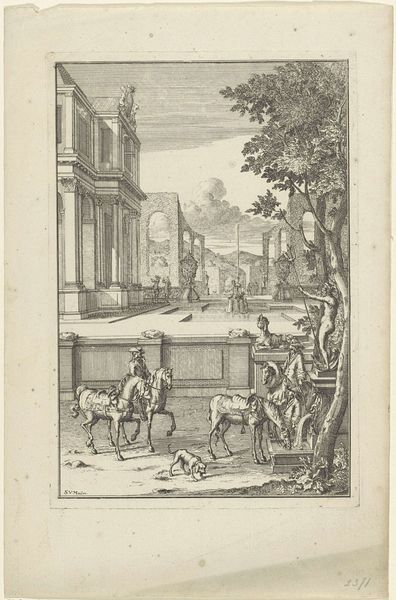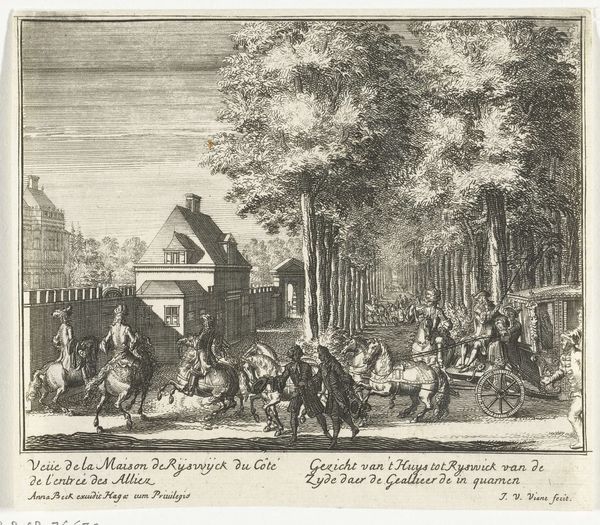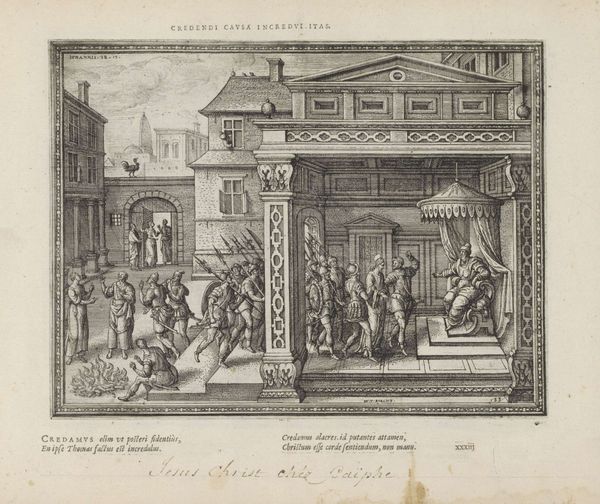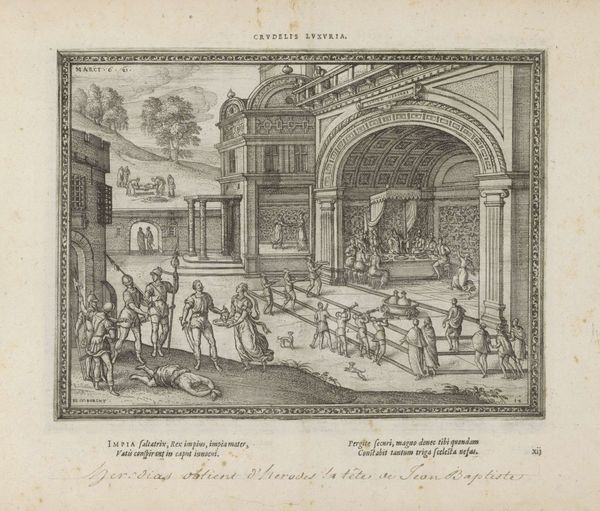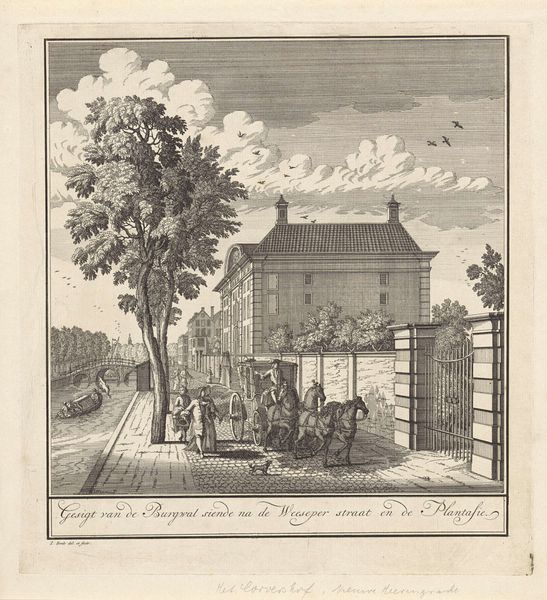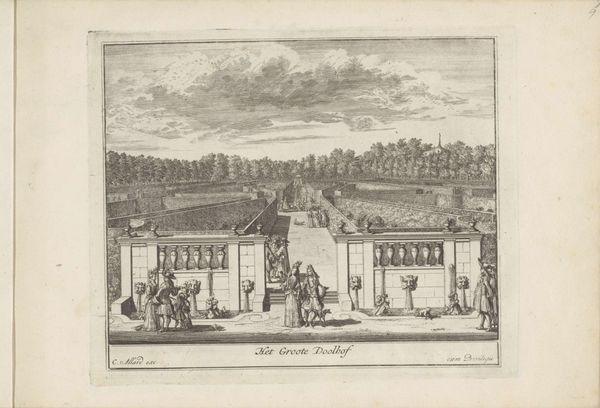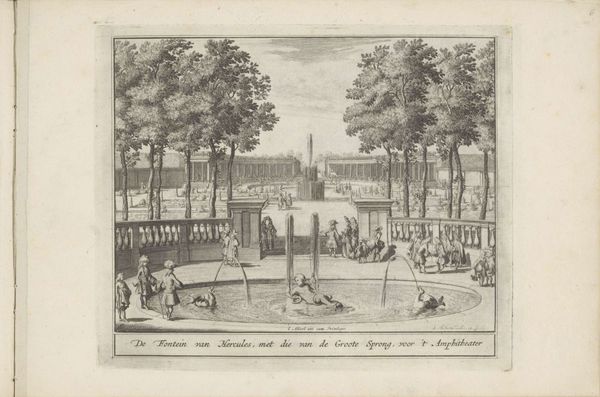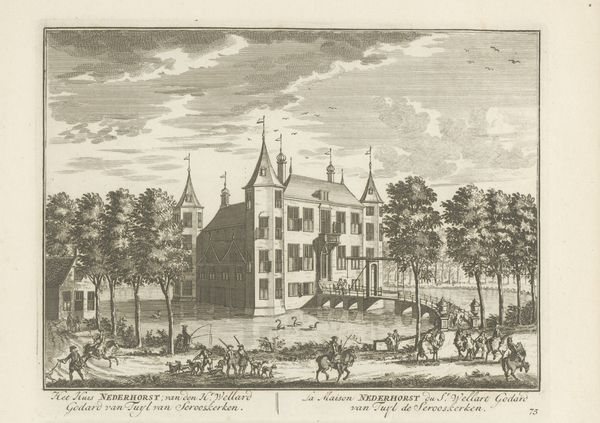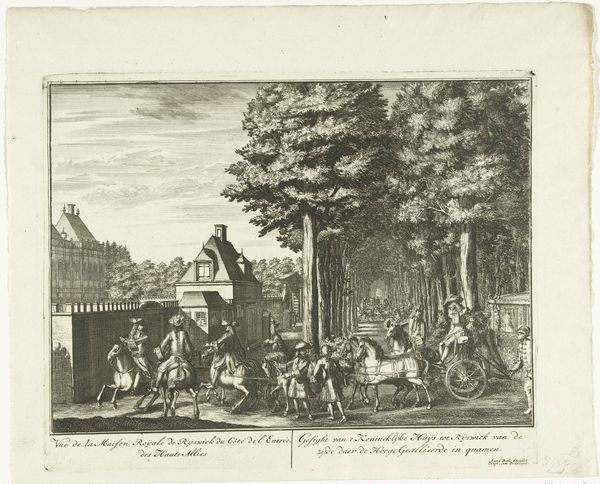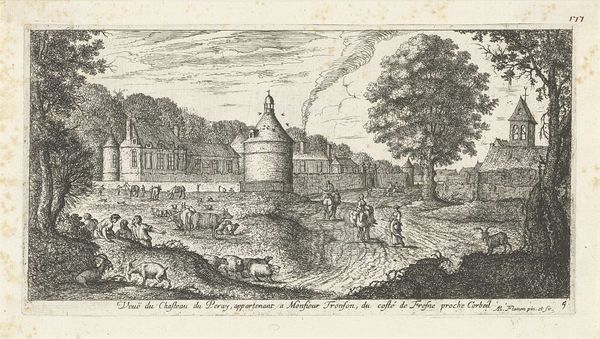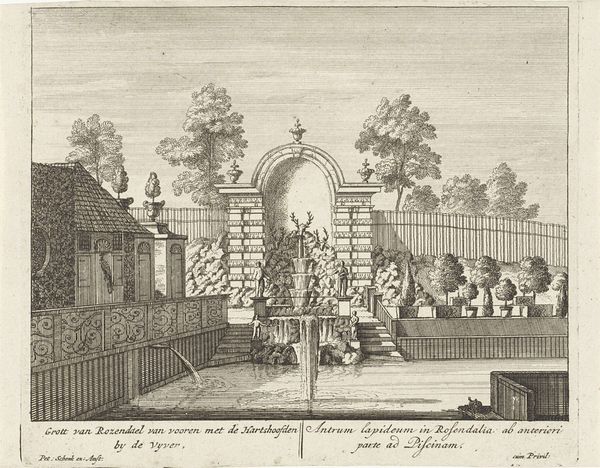
Spotprent op de pogingen van prins Willem IV om stadhouder te worden, 1735 1735
0:00
0:00
print, engraving
#
narrative-art
#
baroque
# print
#
figuration
#
line
#
cityscape
#
history-painting
#
engraving
Dimensions: height 176 mm, width 290 mm, height 195 mm, width 100 mm
Copyright: Rijks Museum: Open Domain
Curator: This engraving, dating back to 1735, offers a satirical glimpse into the political landscape of the Dutch Republic. It's titled "Spotprent op de pogingen van prins Willem IV om stadhouder te worden," which translates to "Satirical print on the attempts of Prince William IV to become stadholder." Editor: My first impression is how stark the contrast is between the two halves. On one side, we see a rather chaotic outdoor scene, while the other depicts a formal, almost sterile interior. It’s like two completely different worlds colliding. Curator: Precisely. The print utilizes those contrasting spaces to underscore the perceived obstacles and the environment around Prince William's aspirations. This was a complex political moment, as various factions within the Republic vied for power. Images were important as a form of popular press and social critique. Editor: Visually, I am immediately drawn to the animals pulling the carriage on the left side. Aren’t those symbols laden with meaning? I see a donkey and is that supposed to be a bear, wearing a saddle blanket? It all seems so absurd, but likely very telling. Curator: The choice of animals is absolutely symbolic. The ungainly assortment signifies the opposition or obstacles facing William IV's ambition to obtain a role like his ancestors of holding power in The Netherlands. The use of such imagery aims to lampoon or criticize the sluggish movement towards his political objectives and the figures around him. Editor: On the other side, inside, we see figures seated around a table, seemingly in deep discussion. The interior is grand, almost imposing, and capped off by the coat of arms—but does the overall effect communicate hope or entrenched power? Curator: The interior presents the formal structures and councils that influence governance. The inclusion of the coat of arms underlines this setting of formal rule. But more important is that it also implies corruption of the councils, and therefore it's not presented to promote hope, more a critique. Editor: So the artist—anonymous, as we often see with political prints like these—is leveraging recognizable symbols to comment on power, access, and maybe even the absurdity of the political process itself. It really is impressive how much narrative is conveyed through a few carefully etched lines. Curator: Indeed. The engraving functions as a historical document and piece of visual commentary. These graphic and baroque strategies could speak loudly in the public square during a politically tumultuous era. The artist clearly wants the public to see the present moment as unwieldy. Editor: Seeing how these potent symbols worked then helps me see some version of their power still resonating today. Thanks to our discussion, I won’t just walk past prints like these at the museum, but rather consider who was speaking and how they used these tropes to say it.
Comments
No comments
Be the first to comment and join the conversation on the ultimate creative platform.

